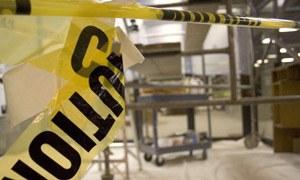
As workloads are mounting in the second half of the semester, much of Binghamton University’s student body will find a second home in the cozy crevices of the Glenn G. Bartle Library.
But what they may not know is that those crevices could pose more of a threat than failing their midterms. Polychlorinated biphenyls, or PCBs, have been found in some of the library’s light fixtures.
PCBs are chemicals used in florescent lighting to make them more efficient. Their use became common in the era that the Bartle library was built. They were popular because of their chemical stability, non-flammability, high boiling point and electrical insulating properties.
By 1977, PCBs were completely taken out of manufacture in the U.S. because they were found to cause harmful health effects and have been proven to build up hazardously in the environment.
According to Physical Facilities and Waste Management, students need not worry about their safety, as the situation is being dealt with before the PCBs become dangerous.
For one to be affected by PCBs, one must be directly exposed. Luckily, while there have been several incidences of leaks in the Bartle Library, beginning in October 2003, with the most recent occurrence in October 2005, no one has been dangerously exposed to PCBs as of yet, a Physical Facilities spokesperson said.
The leaks resulted in a colorless to light-yellow PCB chemical dripping down the wall or onto carpeting in the library. During the most recent leak, the light fixture was smoking as well as dripping the liquid chemical.
In reaction to the leaks and the potential hazards of PCBs, a “re-lighting project” is beginning this April and will continue until around September, said Fladimyr Gouin, head of Waste Management.
He stressed that students are not at risk right now, and the project is entirely “pre-emptive,” not reactionary.
Gouin said that there will be a “more environmentally friendly, and energy efficient lighting system.” He added that the PCBs will be disposed of as hazardous waste.
“Part of what we have to do is identify how many PCB lights there are in each building, and then we will develop schedules for replacement,” said Karen Fennie, a spokeswoman for Physical Facilities.
According to Fennie, PCBs have also been found in other buildings on campus — including the Engineering Building, Health Services, Science III and IV, and both Newing and Dickinson dining halls.
Fortunately, Fennie said, there have been only three leaks to date — all in the library, two of which were in the Reserve Room. Therefore, the library is where the “re-lighting project” will begin.
Some side effects associated with PCB exposure include acne-like skin rashes, potential liver damage, eye irritation and respiratory problems. Additionally, the Environmental Protection Agency believes that PCBs are carcinogenic to both humans and animals.
To learn more about PCBs and how to deal with exposure, visit BU’s website, http://ehs.binghamton.edu/Current%20Safety%20Topics.htm.


